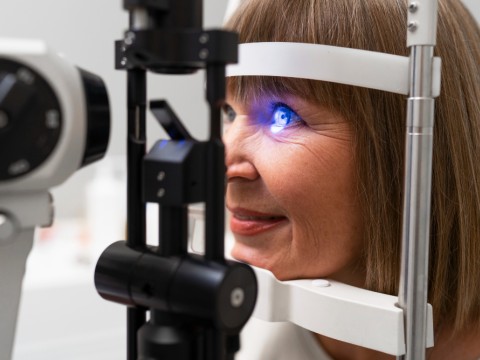Quote of Dünyagöz
Monofocal Femto: Revolutionizing Cataract Surgery
Monofocal Femto is a new and innovative way to approach cataract surgery, the joining of accuracy via femtosecond laser technology with a monofocal intraocular lens. It promises sharper vision with quicker recovery as compared to the conventional surgical procedures for cataracts, thus making this option popular for many patients.
What is Monofocal Femto?
Monofocal Femto describes cataract surgery using femtosecond laser technology for the creation of accurate incisions in the eye. The laser replaces the manual techniques and hence reduces complications, hence increasing precision during the implantation of the lens. A monofocal IOL is implanted after the removal of the cataract. This type of lens focuses at one distance, which is near, intermediate, or far. Therefore, after the procedure, patients usually see much clearer for daily activities such as driving and reading, while glasses may be used for other activities.
Benefits of Monofocal Femto Surgery
One of the significant advantages of Monofocal Femto is its precision. Cleaner, more controlled incisions made by the femtosecond laser mean fewer risks and faster healing times for patients. Minimal discomfort during the procedure and a quicker return to daily routine are also among the benefits. Since the monofocal IOL focuses at one distance, patients enjoy improved clarity without the many complexities associated with multi-focal lenses.
Why Monofocal Femto?
Monofocal FEMTO grants the best chance when patients expect good vision over a certain range of distance, whereby multiple focal distances are not indispensable. It may be very much applicable to people in higher age brackets, wherein cataract surgery is advised. This merges to provide reliability, ensuring effectiveness in the operation for long-period outcomes. At present, monofocal FEMTO Cataract Surgery is creating all miracles worldwide by giving people a brand-new beginning to their blurred vision.
- Health Insurance
-
Accommodation
- Online Healthy Life Assistant 9/5
- Post - Experience Follow Up 6 Month
-
Extra Privileges
- Transfer

- Health Insurance
-
Accommodation
- Online Healthy Life Assistant 24/7
- Post - Experience Follow Up 1 Year
-
Extra Privileges
- Pre-Treatment Doctor Consultation
- Transfer

 Private
Private
- Health Insurance
- Healthy Life Butler
- Post - Experience Follow Up 2 Year
- World-Famous Doctor Consultation
-
Extra Privileges
No suitable hotel found for the relevant dates!
* Price varies depending on extra and upgrade selections.
-
Monofokal Fako (Both Eyes)SelectStarting From 3,529.00 €
-
Multifokal Fako (Both Eyes)SelectStarting From 8,235.00 €
-
Multifokal Femto (Both Eyes)SelectStarting From 9,412.00 €
-
Multifokal Toric Fako (Both Eyes)SelectStarting From 9,412.00 €
-
Multifokal Toric Femto (Both Eyes)SelectStarting From 10,588.00 €
Cataracts are a natural cloudiness that develops on the eye's lens as we age, leading to blurred vision. When traditional corrective measures fail, cataract surgery becomes essential to replace the clouded lens with a synthetic intraocular lens.
While all surgeries involve some level of risk, cataract surgery is a relatively safe procedure when performed by expert doctors. With experienced surgeons, the risks are minimal.
Cataract surgery is performed under local anesthesia, numbing only the eye area without rendering the patient unconscious. The surgeon makes a small incision on the eye surface and removes the clouded lens. Typically, an artificial lens (intraocular lens) is then placed in the position of the removed lens. Thanks to the use of modern technology, cataract surgeries are generally carried out smoothly and swiftly. Patients often experience a significant improvement in their vision after the surgery.
An IOL is a synthetic lens implanted to replicate the natural lens function.
Advanced IOLs often eliminate the need for glasses, but patients opting for traditional single-vision IOLs may need glasses for reading and computer work post-surgery.
Cataracts can indirectly cause nearsightedness or farsightedness and, in rare cases, may lead to glaucoma if left untreated.
Patients may experience minimal pressure but rarely feel pain during surgery. Anesthesia and medication ensure comfort, and the procedure typically takes around 20 minutes.
Cataracts do not redevelop after surgery, but clouding of the lens capsule may occur, requiring a capsulotomy for correction.
The femtosecond laser is a new technology used in cataract surgery. It has been successfully used in refractive surgery for 15 years and is now an important part of bladeless laser surgery for cataracts. Before the surgery, the femtosecond laser performs important maneuvers to ensure precision and safety. This technique, also called bladeless laser surgery, makes the overall surgical process easier and safer by completing certain stages beforehand. The femtosecond laser also helps mark the correct position for the lens implantation, which improves the outcome of the surgery.
The initial recovery period after cataract surgery is relatively quick, with many patients experiencing improved vision within a few days. However, complete healing and stabilization of vision may take several weeks.




